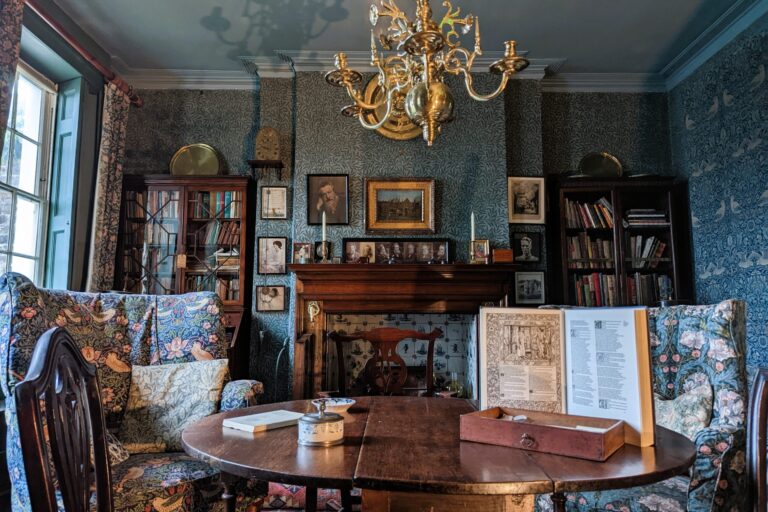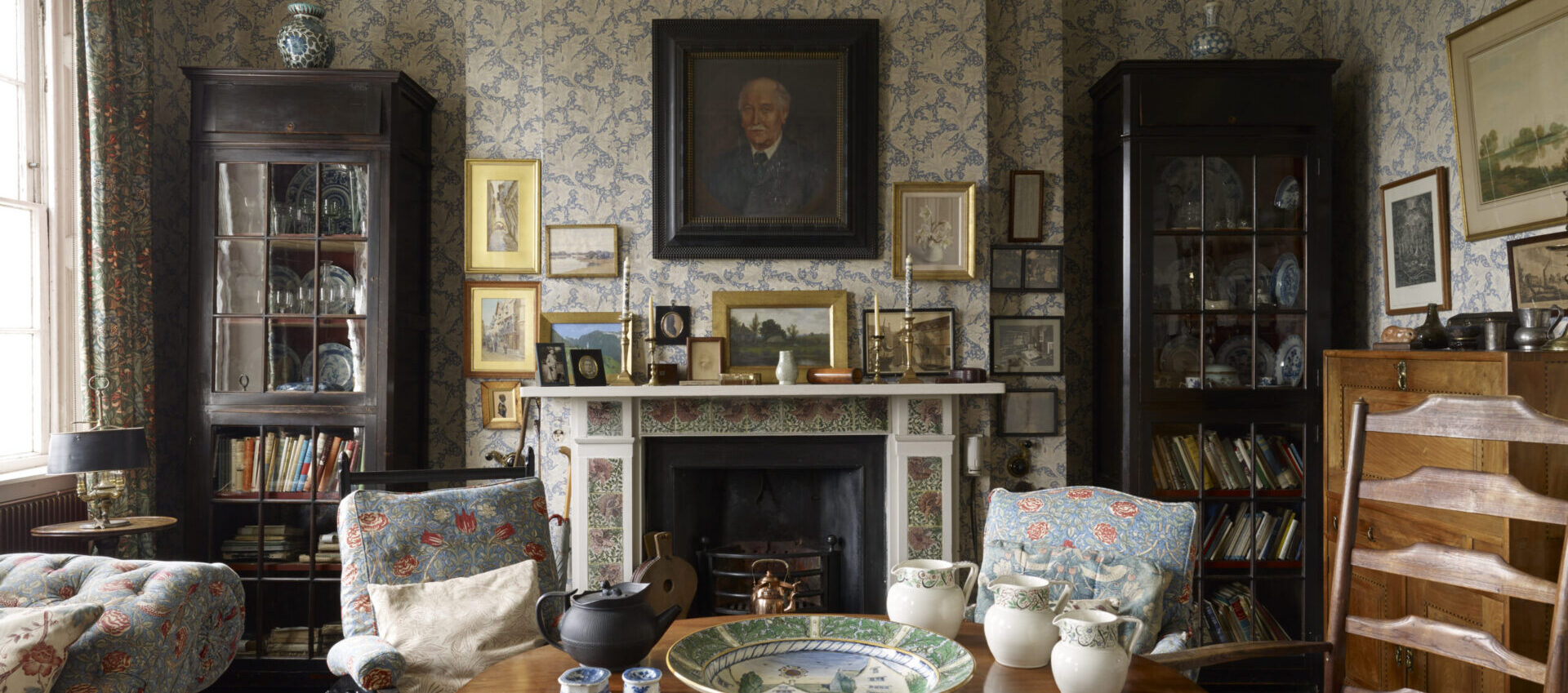Emery Walker’s House | A textbook example of Arts and Crafts era interior design
Sir Emery Walker was a central figure in the Arts & Crafts movement.
He also had a really neat house…
On a visit to his home in Hammersmith, you’ll be able to verify both these statements. Walker was a prominent engraver, photographer and printer. During the Industrial Revolution, he forged a strong bond with William Morris over their anti-industrial ideals and appreciation for the handmade; the two becoming close friends and collaborators.
His house, a grade-II listed Georgian building at 7 Hammersmith Terrace, is now open to the public as one of the more unusual museums in London. Considering Walker’s background and love for decorative aesthetics, it’s very easy on the eyes and full of history – you can nosey around the rooms that the Walkers (and the likes of Elizabeth de Haas, Philip James de Loutherbourg RA & Thomas James Cobden-Sanderson) used to occupy, soaking up the contents and intricate design details. It still feels like a real home, not just because it was a real home, but because much of the space has been kept as it was back in 1907, when Emery and his wife Mary Grace first arrived.

Image: Lucinda MacPherson
The house is littered (in a good way) with arts and crafts era memorabilia, from hand-blocked Morris & Co wallpaper to special patterned tapestries; original linoleum; antique furniture; rugs; jewellery and mementos such as a 17th century office chair (gifted to Emery Walker by William Morris’ widow, Jane). They’ve even gone as far as keeping a lock of Morris’ hair, which (while not being strange at all) serves as a token to the friendship the pair once shared. You’ll also find personal photographs – many taken by Emery Walker himself – of his friends and colleagues, who were also vital figures in the printing industry and the Arts and Crafts movement. Other conserved objects include a rather impressive hoarding of ceramics, many acquired at markets and bazaars by the Walkers on their travels to Europe and North Africa.
Head on outside and you’ll meet the garden (with views that widen over the River Thames). As with the inside, this has been thoroughly looked after too – mostly thanks to Emery’s daughter Dorothy, who was an enthusiastic gardener and lived in the house after her father’s death, making sure the landscaping was kept in good nick with roses, a jasmine plant and draping of wisteria. It’s a beautiful setting, suspended in time – a feeling helped by the fact that tours are limited to eight at a time, as the house is small and the artefacts are extremely fragile.
Probably not the best place to accidentally knock something over then…
NOTE: Emery Walker’s House is open for guided tours, which you need to book ahead. Tours last an hour and a half, and cost £11.25. You can find out more and book right HERE.
Emery Walker’s House | 7 Hammersmith Terrace, London W6 9TS
What to do straight after looking around a stranger’s house? Hit up one of Hammersmith’s best pubs…
